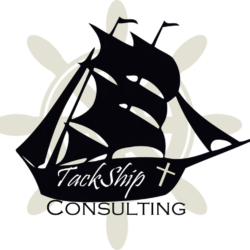Your Values & “Why”
There is a lot of value to “why” your company does something. The why can help your customers resonate with your product or service or potentially even your ability to attract and retain talent.
A process is the “how” you interact and serve your customers. In the Traction book, it’s referred to as the “way” you conduct business. It is an essential aspect of the definition of your company. If your team can articulate it, it gives you an air of professionalism, giving confidence to your customers that you know what you are doing.
The process is often associated with large corporations and can also be associated with bureaucracy or rigidity that does not allow for creativity. However, everything we do in life follows processes.
Processes are a part of life
What we do when we wake up in the morning, to our arrival at work, is all a process that we do every day. Similarly, how you serve your customers can be easily articulated. When you document your process, you can better understand customer touchpoints and who is interacting with the customers– allowing you to better train employees.
Likely, you have sales/marketing and operations departments, where the product gets generated, or the customer gets served, and a finance/admin team where functions like hiring and payroll get done.
One TackShip customer has an overarching process of Design, Build, Maintain – three basic steps that when combined with their “why” and their “what,” sets them apart from their competition.
Another TackShip customer provides real estate services. Documenting how they can serve their customers in the discovery process and secure the space for their customers, allows them to provide the needed insight for customers who may not understand the process. The brand is their process, and you could even go so far as to trademark your own process.
Keeping the process simple
In previous blog posts, we’ve talked about the process of creating an Accountability Chart. You may have already started by identifying core functions and who is accountable for their performance. Eventually, you want to be able to identify the steps of each of these functions so that they are repeatable and do not rely on a single “hero” to complete.
If you find that your process is lacking, you may want to create a new aspirational process, which is how you would like your customers served better. In this case, determining where you are and where you want to go can help create a roadmap for investment in tools, process development, or people who can take your system to the next level. In documenting processes, as with all things in the EOS world, the KISS (keep it simple, stupid) principle applies.
Similarly, to the process, the easier it is to understand, and the easier it is for employees and customers to learn. In Traction, this can be done by documenting the 20% of the process that gets 80% of the results. Write down the steps of your process with some bullet points of specific procedures.
Here are some examples of core processes in an organization:
1. HR
2. Sales
3. Marketing
4. Operations
5. Accounting
6. Customer Retention
By focusing on the individual core processes for each department, you can help to ensure the intended success of the organization as a whole.
Get Professional Help
Figuring out the process for your company and documenting it can be daunting. Tackship Consulting is a professional executive coaching firm that can help. We specialize in helping organizations like yours navigate the pain points to take their business to the next level.
Activate your passion, and optimize your performance with Tackship Consulting today. To learn more, schedule your free consultation.


